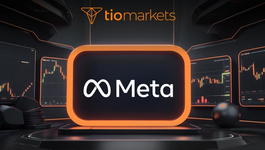The Fibonacci Retracement
BY Chris Andreou
|September 17, 2021Leonardo Pisano, nicknamed Fibonacci, was an Italian mathematician born in Pisa in the year 1170. Thanks to his father Guglielmo Bonaccio, who worked at a trading post in Bugia (North-Eastern Algeria), now named Béjaïa, he had the chance to study mathematics, and during his extensive travels, he learned about the advantages of the Hindu-Arabic numeral system.
He got to discover a sequence of numbers, after 0 and 1, each number is the sum of the two prior numbers. In the context of trading, the numbers used in Fibonacci retracements, are not numbers of the sequence. These numbers are derived from the mathematical relationship between the numbers in the sequence. The retracement levels are depicted by taking high and low points on a chart and making the key Fibonacci ratios horizontally to produce a grid. These horizontal lines may be used to explain the potential price reversal points.
The Golden Ratio:
In 1202, Fibonacci returned to Italy and documented his knowledge in “Liber Abacci” (Book of Abacus), describing this sequence: 0,1,1,2,3,5,8,13,21,34,55,89, 144, 233, 377, 610 and so on, extended to the infinity. The size of each number is approximately 1.618 times greater than the preceding number. This value: 1.618 is called Phi or “The Golden Ratio”. This number appears frequently in nature, architecture, fine arts, biology. Leonardo Da Vinci was aware of this and represented it in his paintings. Sunflowers, Rose Petals, Mollusk Shells, Tree Branches, Human Faces, Ancient Greek vases, and even the spiral galaxies of outer space.
The inverse golden ratio (1.628) is 0.618, which is also used extensively in Fibonacci trading.
An example of the Relationship of the numbers: 89/144=0.6180. the 38.2% ratio derives from dividing a number in the Fibonacci series by the number two places to the right. And you can play in different ways with these combinations. The retracements are depicted by taking high and low points on a chart and marking the key Fibonacci ratios of 23.6%, 38.2%, and 61.8% horizontally to produce a grid. These lines are used to identify potential price reversal points. 50% is the most common retracement level in the grid. While it is not based on the Fibonacci number, it is widely viewed as an important level. Notably recognized in the Dow Theory, and also in Gann’s Theory.
Usually, retracements are used as part of a trend trading strategy to make low-risk entries in the direction of the initial trend using the Fibonacci levels. This strategy is used to anticipate that a price has a high probability of bouncing from the Fibonacci levels back in the direction of the initial trend
EXAMPLE:
If you would like to try trading using this strategy, open a low-cost trading account with TIOmarkets from $0 commissions per lot and tight spreads from just 0.2 on EURUSD. Register today with TIOmarkets.com
Risk disclaimer: CFDs are complex instruments and come with a high risk of losing money rapidly due to leverage. You should consider whether you understand how CFDs work and whether you can afford to take the high risk of losing your money. Never deposit more than you are prepared to lose. Professional client’s losses can exceed their deposit. Please see our risk warning policy and seek independent professional advice if you do not fully understand. This information is not directed or intended for distribution to or use by residents of certain countries/jurisdictions including, but not limited to, USA & OFAC. The Company holds the right to alter the aforementioned list of countries at its own discretion.
Join us on social media

Experienced independent trader
Related Posts





